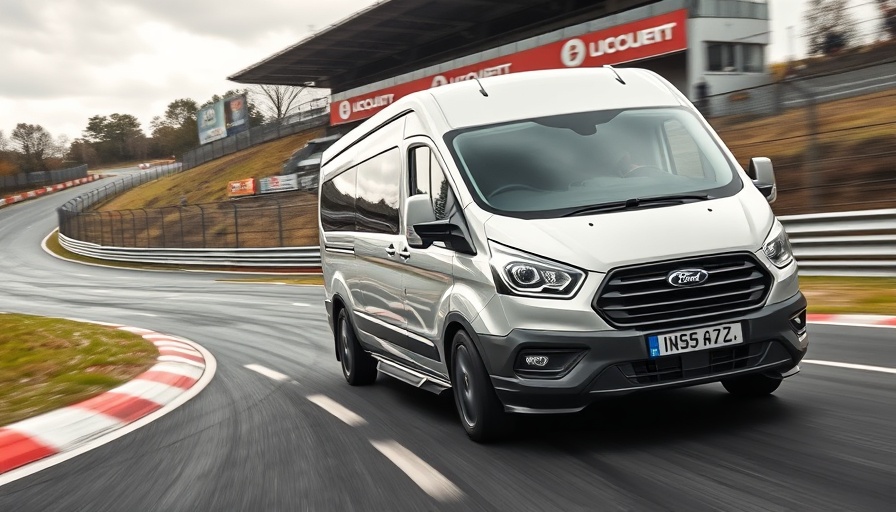
The Unrivaled Performance of Ford's SuperVan 4.2
In a remarkable feat of engineering, Ford has shattered perceptions of what a van can achieve on the racetrack with the introduction of the SuperVan 4.2. This electric prototype has cleared the Nürburgring in a staggering 6 minutes and 48.393 seconds, making it not only the fastest van to ever conquer this challenging 12.9-mile course but also the ninth fastest vehicle overall. Piloting the SuperVan, seasoned driver Romain Dumas showcased electric power at its zenith, reaching jaw-dropping speeds of close to 262 mph.
Redefining Electric Performance
This record-setting performance underscores Ford's commitment to pushing the boundaries of electric vehicle (EV) technology. The SuperVan 4.2, equipped with a cutting-edge three-motor all-wheel drive system generating over 2,000 horsepower, reflects a significant leap forward in EV capabilities. Unlike typical vehicles in its category, this powerful machine challenges not only competition from Chevrolet but also performance icons like the Porsche 911 GT3 RS and Ford's own Mustang GTD. Each record run is a testament to what Ford aims to bring to production vehicles, highlighting efficiency and raw power combined ingeniously with aerodynamics.
A Look Back at the SuperVan Legacy
Ford’s SuperVan lineup has an intriguing history, dating back to a whimsical concept from the early 1970s aimed at demonstrating the efficacy of utilizing substantial power in a sleek van body. Since then, this line has evolved dramatically. The latest iteration—the SuperVan 4.2—symbolizes not just a maximum-speed machine but a trial ground for innovative technologies that can revolutionize the automotive landscape. It has previously made headlines, becoming the fastest electric and commercial vehicle to lap Australia's Mount Panorama, and turning out impressive results at the Pikes Peak International Hill Climb.
Comparative Analysis of Electric Vehicle Competitors
In the growing EV market, Ford's achievement propels it into the spotlight as a leading innovator. Unlike General Motors, which currently lacks a high-performance electric van, Ford's SuperVan remains unchallenged within its segment. This absence leaves Chevrolet scrambling to respond and solidifies Ford's position as a pioneering automaker within the rapidly evolving transportation sector.
Honoring Legends While Carving New Paths
With the SuperVan 4.2’s record-setting run, Ford also paid tribute to the late Nürburgring legend Sabine Schmitz, a statement of the progressive spirit she embodied—a spirit that refuses to be tethered by convention. Schmitz's legacy lives on in the adrenaline-fueled atmosphere of vehicles like the SuperVan, which represent the daring nature of motorsport culture.
Future Implications for the Automotive Industry
As electric vehicles continue to surge in popularity, the SuperVan 4.2 sets a new benchmark similar to the rapid evolution seen in the car industry from the 1920s through 1990s when performance and efficiency became paramount. Ford’s groundbreaking approach could have implications for all automakers, spearheading a shift toward more exciting and capable electric vehicles that appeal to a contemporary consumer base that values both performance and sustainability.
Conclusion: A New Era Dawns
The SuperVan 4.2's remarkable achievement not only represents a significant milestone for Ford but also a pivotal moment for the entire automotive industry. As this electric powerhouse continues to set records, it invites both consumers and competitors to rethink the boundaries of performance and to how electric technologies can be embraced in everyday vehicles. Exciting opportunities lie ahead as manufacturers up the ante in this fast-paced market.
 Add Row
Add Row  Add
Add 




Write A Comment